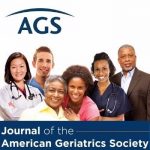 Journal of the American Geriatrics Society Research Summary
Journal of the American Geriatrics Society Research Summary
As we age, we may become weaker as our muscles tend to lose their mass and strength. This condition of losing muscle mass is called sarcopenia. Sarcopenia can lead to problems performing your daily activities, such as shopping, socializing, and taking care of yourself and your home. Having sarcopenia can lessen your quality of life—and your independence.
A simple, fast way to test your overall muscle strength is by measuring the strength of your handgrip. In the test, you grip a small device as hard as you can, and it measures the strength of your grip. Studies have shown that handgrip strength is closely linked to muscle mass and other signs of your general health, including nutrition and walking ability. What’s more, handgrip strength is considered an important test for diagnosing sarcopenia. Weak handgrip strength can predict low muscle mass and poor physical performance.
Research has linked handgrip strength to other health problems in older adults. Losing muscle strength as you age also means losing muscle strength in your respiratory system. (The respiratory system is the part of your body responsible for breathing.) This can lead to poor lung function. When your lungs don’t function properly, you are at higher risk for respiratory issues like bronchitis and pneumonia, as well as heart disease and even death.
However, little is known about the link between handgrip strength and lung function in older adults. A team of researchers recently decided to learn whether testing handgrip strength could help identify lung function in older Korean women. Their study was published in the Journal of the American Geriatrics Society.
The researchers used information from the 2014-2015 Korean National Health and Nutrition Examination Survey (KNHANES), which was conducted by the Korea Centers for Disease Control and Prevention (KCDC). KNHANES is a nationwide survey that looks at health and nutrition for Koreans.
The survey consists of three sections: a health interview, a nutrition survey, and a health examination. The health examination consisted of blood pressure measurements, eye and mouth exams, laboratory tests, and several other tests (including ones for strength). The researchers looked at a smaller group of survey participants: 1,773 healthy women between the ages of 65 to 79.
The researchers learned that among the 1,773 women they studied, handgrip strength was linked to lung capacity—a measure of how well your respiratory system functions. The researchers concluded that testing older adults’ handgrip strength could be a good way to test their potential for impaired lung health.
This summary is from “Relationship between Handgrip Strength and pulmonary function in apparently healthy older women.” It appears online ahead of print in the Journal of the American Geriatrics Society. The study authors are Da-Hye Son, MD; Ji-Won Yoo, MD; Mi-Ra Cho, MD; and Yong-Jae Lee, MD, MPH, PhD.
